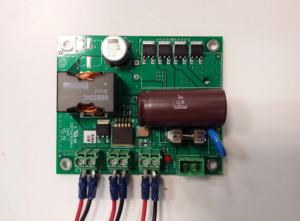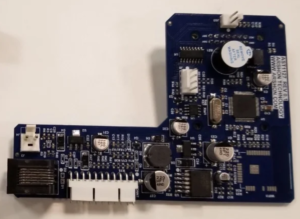Despite growing levels of semiconductor integration and readily available systems-on-chips for many applications, in addition to the growing availability of highly-featured development boards, electronics often still need a custom PCB. Indeed for “one-off” advancements, the simple PCB yet plays an important part. It’s a physical platform for design and the most adaptable for extracting an electronics system synchronically.

In this article, we will describe the best practices of PCB design, most of which have stayed constant for 25 years. These rules can usually be applied to any PCB design project and it will be proved as a valuable model for veteran design engineers as well as for makers.
1: Find the right grid.
Get a grid spacing that suits your components as many as possible and use it completely. Although several grids may seem nice, short extra care at the initial stages of the layout can avoid spacing difficulties and will maximize board use. Various devices are available in distinctive package sizes, so use them as per your satisfaction. Moreover, as the polygon is a significant shape while adding copper to your board, and boards with multiple grids will usually deliver polygon-fill discrepancies, not standardizing on one grid can make it tougher than required.
2: Keep trace lengths short and direct
This rule fits even if it suggests moving back over parts of the layout again to optimize track lengths. This implements usually in analog and swift digital circuitry where impedance and parasitic effects will perpetually play a role in limiting your system performance.
3: Use a power plane to manage the distribution of power lines and ground.
Using splashes on the power plane is a fast and simple option in most PCB design software. It uses plenty of copper to contemporary connections and assists power flows as efficiently as feasible with minimal impedance or voltage drop, including the ground return paths are adequate.
If feasible, operate multiple supply lines in the same section of the board and recognize that if the ground plane is run over a large section of one layer, it can have a real impact on cross-talk among lines running over it on an adjacent layer.
4: Group correlated parts and test points together.
For example, put the discrete components required for an opamp adjacent to that device so the bypass capacitors and resistors are co-located with it. This assists with the track lengths in Rule #2, and it also performs testing and fault-finding easier.
Check out Marker Shop also
5: Panelize by replicating your PCB board that you need several times on a larger board.
Utilizing a capacity that completely suits the equipment used by your manufacturer will adjust the cost of manufacturing and prototypes. Begin by setting out the board as one panel. Ask your board house what size panel they prefer to use. Next, when your designed rules should be changed. Track and repeat your design multiple times within the chosen panel size.

6: Combine your component values.
As a designer, you should pick some discrete components that could be lower or higher value and works identically. Concentrating on a shorter range of standard values makes the BOM simpler and probably cheaper. It also makes stock decisions more apparent in the long run if you have a variety of PCBs based on your selected device values.
7: Design rule check (DRC) frequently
The DRC function on PCB software uses a short time, but frequent checks can save a lot of time on more complex designs, and it is a great practice to use. Every layout decision is significant, but the DRC keeps the most relevant ones on top.
8: Use the silkscreen carefully.
The silkscreen can be utilized to simulate an abundance of useful data to the board builder, as well as the services, installer, device operator and test engineers. Clear labels describing functions and test points are understandable, but the orientation of components and connectors should also be examined wherever feasible.
It’s a good practice if annotation ends up under your components following board assembly. Complete use of silk screening on both sides of the board streamlines production and can lessen re-work.
9: Decoupling caps is important
Do not try and optimize your design by evading decoupling power lines and taking the entire ends of component datasheets. Capacitors are cheap and sturdy, so take time to arrange them in the best possible way and retain Rule #6 – use a variety of standard values to maintain the inventory neatly.
10: Create your PCB manufacturing data and check it before sending it out to be fabricated.
Many board houses will be glad to do this for you, but if you output your own Gerber files first and use a free viewer to confirm it looks as you envisioned, then you can dodge misunderstanding. Even you can catch an inaccuracy unwittingly before it’s set permanently in copper, fiberglass and resin.
Since circuit designs are widely shared, and reference designs are relied upon by more in-house teams, we believe it’s significant that basic rules like these last more, in printed circuit design. Keeping view of the basics suggests developers to maintain the flexibility, to add value to their products and extricate the most from every board they make. Lastly, anyone new to board design will stimulate their learning-curve and confidence when the basics are “designed in.”
